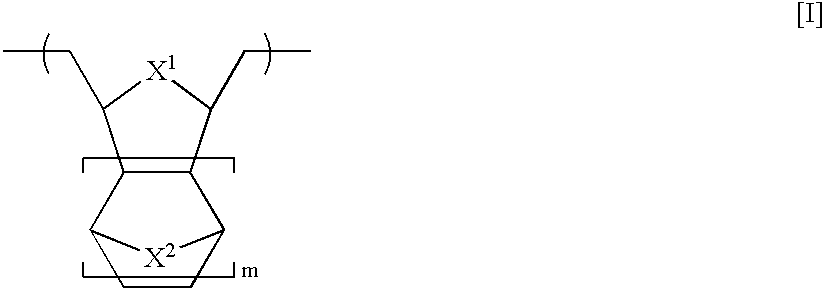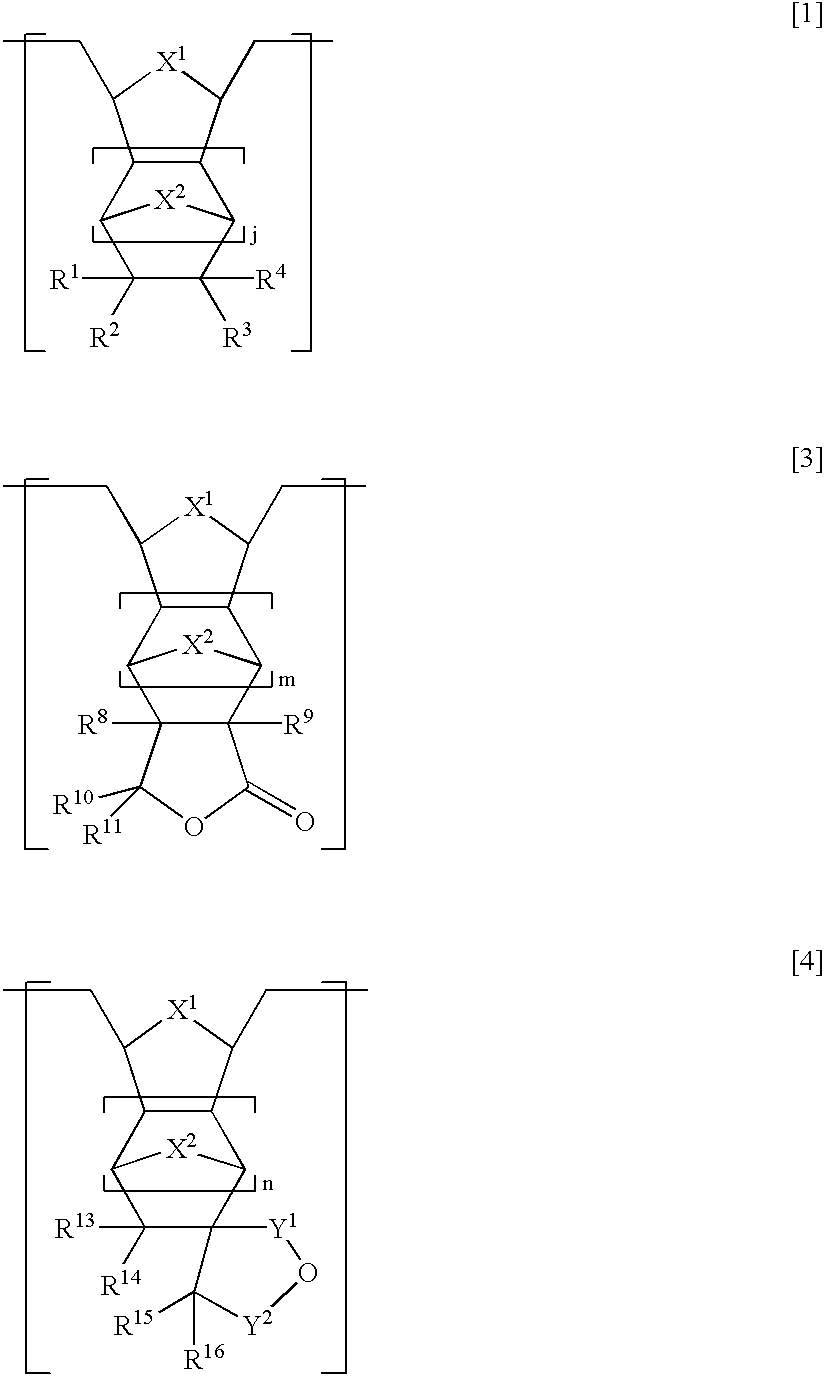Resist patterning process
- Summary
- Abstract
- Description
- Claims
- Application Information
AI Technical Summary
Benefits of technology
Problems solved by technology
Method used
Image
Examples
first embodiment
In the first embodiment, the resist patterning process of the present invention starts with a resist composition which uses as a base resin a polymer or copolymer comprising structural units of the following general formula [I] in a backbone and partially having acid labile groups on side chains.
Herein X1 and X2 are independently selected from among —O—, —S—, —NR—, —PR—, and —CR2—, wherein R is hydrogen or an alkyl group of 1 to 20 carbon atoms, especially 1 to 10 carbon atoms, and m is 0 or an integer of 1 to 3.
The base resin used in the first embodiment is described in detail. The preferred resist composition of the present invention uses as the base resin a hydrogenated product of a ring-opening metathesis polymer comprising structural units [A] of the general formula [1], and structural units [B] of the general formula [3] and / or structural units [C] of the general formula [4], shown below.
In formula [1], at least one of R1 to R4 is a group having an acid labile group of the f...
second embodiment
In the resist pattern forming process according to the second embodiment of the present invention, the base resin used in the resist composition is a mixture of a hydrogenated product of ring-opening metathesis polymer and a poly(meth)acrylic acid derivative.
The (second) hydrogenated product of ring-opening metathesis polymer used herein is a polymer comprising recurring units of the following general formula (I) and having a weight average molecular weight of 500 to 200,000.
Herein R101 is hydrogen, methyl or CH2CO2R103; R102 is hydrogen, methyl or CO2R103; R103 which may be identical or different between R101 and R102 is a straight, branched or cyclic alkyl group of 1 to 15 carbon atoms; R104 is an acid labile group; R105 is a halogen atom, a hydroxyl group, a straight, branched or cyclic alkoxy, acyloxy or alkylsulfonyloxy group having 1 to 15 carbon atoms, or a straight, branched or cyclic alkoxycarbonyloxy or alkoxyalkoxy group having 2 to 15 carbon atoms, in which some or all ...
example
Examples are given below by way of illustration and not by way of limitation. The abbreviation SEM is a scanning electron microscope, and Mw is a weight average molecular weight as measured by GPC using a polystyrene standard.
PUM
| Property | Measurement | Unit |
|---|---|---|
| Temperature | aaaaa | aaaaa |
| Temperature | aaaaa | aaaaa |
| Fraction | aaaaa | aaaaa |
Abstract
Description
Claims
Application Information
 Login to View More
Login to View More - R&D
- Intellectual Property
- Life Sciences
- Materials
- Tech Scout
- Unparalleled Data Quality
- Higher Quality Content
- 60% Fewer Hallucinations
Browse by: Latest US Patents, China's latest patents, Technical Efficacy Thesaurus, Application Domain, Technology Topic, Popular Technical Reports.
© 2025 PatSnap. All rights reserved.Legal|Privacy policy|Modern Slavery Act Transparency Statement|Sitemap|About US| Contact US: help@patsnap.com



